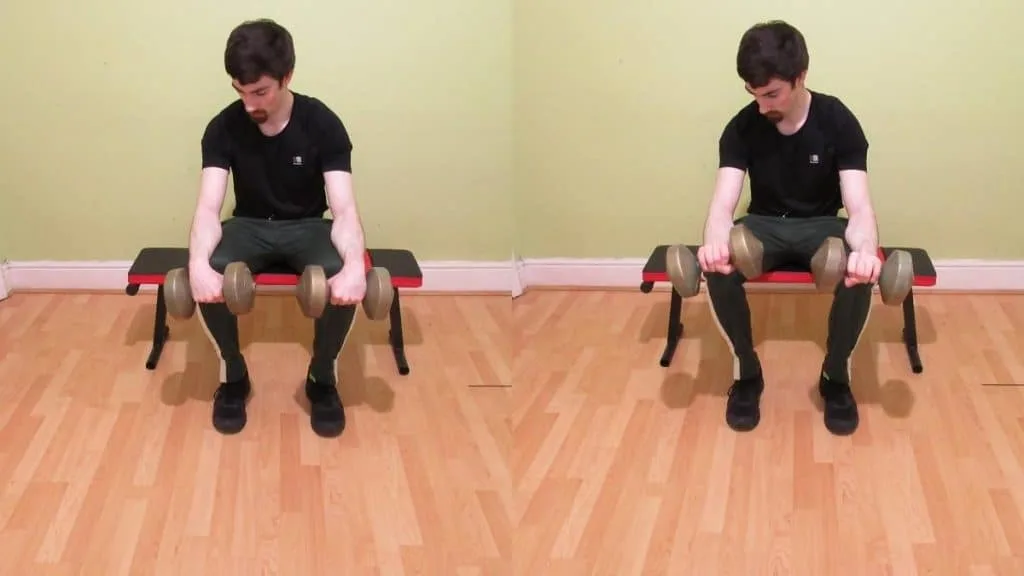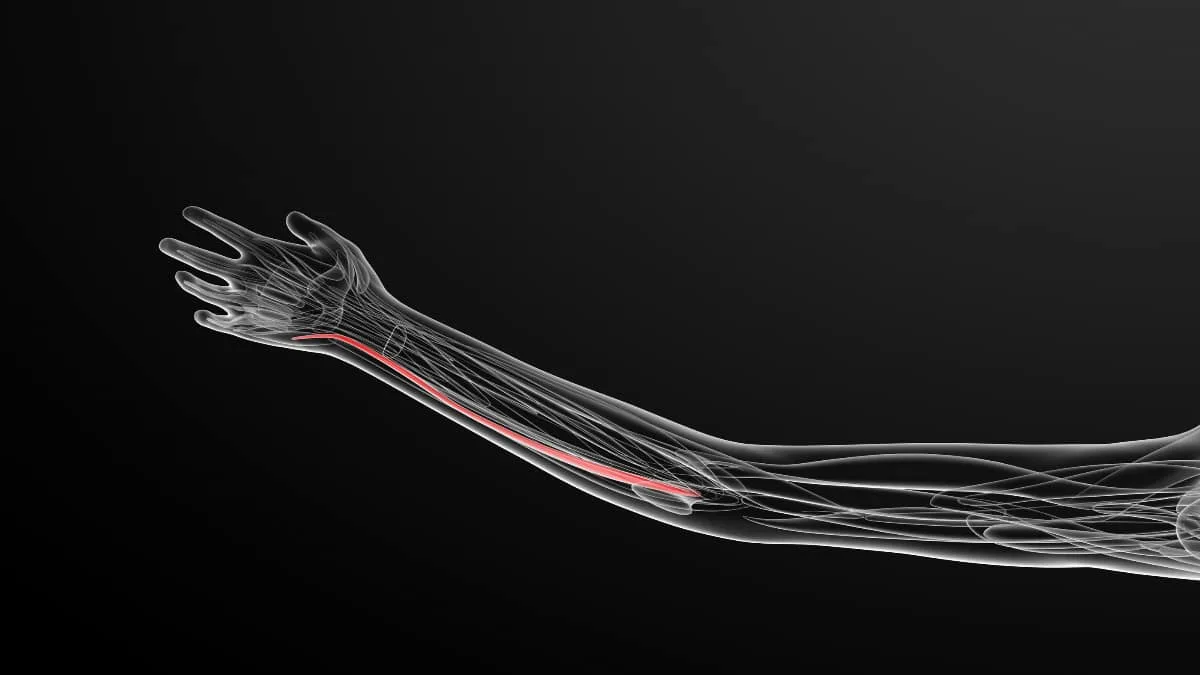Out of the many different forearm muscles in your arm, it’s actually the humble extensor carpi ulnaris that lies the closest to the skin. Or, to put it more scientifically, it’s the most superficial lower arm muscle.
While this might seem like an insignificant anatomical fact, it isn’t. Because this muscle is so close to the surface, it can easily become injured or sprained when you lift weights regularly or perform any kind of repetitive motion involving the wrist joint.
As such, it’s incredibly important to perform various extensor carpi ulnaris exercises to keep your forearms not only strong, but healthy too. I’ll also share my favorite extensor carpi ulnaris stretch with you so that you can still enjoy the muscle-strengthening benefits even if you don’t have any equipment.
Related extensor exercises
- Extensor carpi radialis brevis exercises
- Extensor carpi radialis longus exercises
- Extensor digitorum exercise
- Extensor pollicis brevis exercises
Extensor carpi ulnaris anatomy
Not everyone enjoys anatomy. Yet nobody can deny that a basic anatomy knowledge of the muscle you’re trying to strengthen is crucial if you want to find the best exercises for the job.
The extensor carpi ulnaris originates on the lateral side of the humerus and inserts at the 5th metacarpal bone of the hand. It also has an attachment to the posterior border of the ulna. [1]
Like the other forearm extensor muscles, the extensor carpi ulnaris performs wrist extension. However, due to its insertion into the hand and its orientation, it also assists with adduction of the wrist (ulnar deviation).
In practice, this muscle is highly active when you’re typing on the computer, seen as your wrists are usually slightly extended during this activity.
Similarly, because it’s such a highly active muscle, it’s particularly easy to injure. And by that, I mean it’s often a large component of the injury known as tennis elbow. So let’s take a look at the best exercises to avoid and help heal injuries of this often-overlooked muscle.
Extensor carpi ulnaris exercises
1. Eccentric wrist extensions

The key to rehabilitation and strengthening is to provide your muscle with stimulus without overworking it, which could actually have the opposite effect by making your injury worse.
Therefore, we’re starting with an eccentric wrist exercise.
Grab a light dumbbell, and then place your forearm on a weight bench/table/desk with your hand hanging off the edge. Then, slowly lower the dumbbell towards the floor by bending your wrist. Descend until you feel a comfortable stretch in your forearm, and then, with your other hand doing most of the work, lift the dumbbell back up to the starting position by pushing your ‘dumbbell hand’ upwards.
2. Extensor carpi ulnaris stretch

In a world where people are overly concerned about making their body look “good,” stretching seems to have taken a backseat. And that’s a shame because it’s an especially effective method for preventing and assisting in the healing of tennis elbow and repetitive strain injuries. [2]
To do this particular extensor carpi ulnaris stretch, you can either stand up or sit down.
Put your arm out in front of you and lock your elbow out fully. Then, flex your wrist by pulling it towards the underside of your forearm while also adducting it slightly (bringing it closer to the midline of your body) with your opposite hand. Hold this stretch for 10-20 seconds and then repeat it for your other arm.
3. Wrist curl

This exercise is similar to the first and can also be part of a brachioradialis workout for the forearms. But instead of ‘cheating’ the weight up with our other arm, this time, we’re going to let our working arm do all of the heavy lifting.
Again, you’ll want to begin with a very light dumbbell. And yes, fellas, that might mean using a nice pink 2lb dumbbell for this activity!
Place your forearm on a flat surface (like a desk) and let your hand hang off the edge while it’s holding the dumbbell. Then, lower the weight down to the ground by allowing your wrist to bend. Once you feel a nice stretch in your forearm, come back up by extending your wrist until you feel a nice forearm contraction. Repeat for 10-20 reps and do around 2-3 sets.
See also:
- Anconeus exercises
- Flexor carpi radialis exercises
- Flexor carpi ulnaris tendonitis exercises
- Flexor digitorum profundus stretch
- Flexor digitorum superficialis exercises
- Flexor pollicis longus stretch
- Palmaris longus exercises
- Pronator quadratus exercises
- Pronator teres stretch
The verdict on extensor carpi ulnaris exercises
Usually, most of the forearm extensor muscles don’t require specific exercises because they get worked through regular resistance training. However, I’ve found that the extensor carpi ulnaris stretch can really help to relieve some of the tension that builds up in the forearm due to repetitive activities.
The great thing about the dumbbell extensor carpi ulnaris exercise, too, is that you can do it virtually anywhere and with very minimal equipment.
As with any new exercise, it’s essential to start off light until you become accustomed to the movement. However, with a muscle as small as the extensor carpi ulnaris, you might not ever need to increase the weight, at least not significantly.
Remember, a 1lb increase for the forearm is like a 20lb or 30lb increase for the legs. Mastering the technique is by far the most important determinant of your results, and if more people could do that, then there would be fewer injuries in the world.
References
- Vasković, J. (2020, October 29). Extensor carpi ulnaris muscle. Kenhub. https://www.kenhub.com/en/library/anatomy/extensor-carpi-ulnaris-muscle
- Wikipedia contributors. (n.d.). Extensor carpi ulnaris muscle. Wikipedia. https://en.wikipedia.org/wiki/Extensor_carpi_ulnaris_muscle

